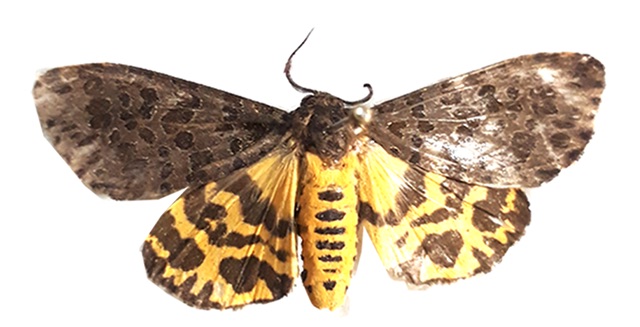After the discovery of tiger moth species ‘Olepa Scheini’ in Western Ghats of Maharashtra in June, researchers have discovered three new subspecies of tiger moth in Western Ghats of Maharashtra.
The Scientists of the Zoological Survey of India (ZSI), Western Regional Centre (WRC), Pune, Dr Aparna Sureshchandra Kalawate, Dr K.P. Dinesh, and Ms LA. Shabna have now found three new species and a subspecies of moth.
This discovery was recently published in an international journal “Journal of Insect Biodiversity” based in New Zealand.
The very new discovery of three species is named as Olepa Ghatmatha (to acknowledge the name of the place of moth collection), Olepa Suryamal, Olepa Zedesi, and the new subspecies, as Olepa Suryamal Rekhae (honoring the respectable personality). Along with the new species and new subspecies taxonomists have discovered ‘morphotypes’, which means the species under which the morphological differences occur in the same species.
Since 2016, the discoveries and exploration were made by the team of Scientists of ZSI and WRC, Pune, wherein the present Olepa moth collections were made from landscapes of the Western Ghats and few from the ‘Satpura’ ranges.
“The identification of new species and subspecies is done based on the combination of morphological studies, accessible literature comparisons, DNA barcoding, and its phylogeny,” Dr Aparna Kalawate told The EarthView.
She further said, “The identification of the Olepa moths was a difficult task as they are considered to be cryptic species and the presence of these species was a doubtful question, due to the contrasting zoogeographical collection localities. Further studies showed this discovery can be added to the 11 kinds of species known so far in the Olepa genus. Now with the addition of the three new species, the total has reached to 14 species including 2 subspecies.”
Dr Aparna said, ” Later, to understand the morphological species identification mt (mitochondrial) COI DNA Barcode studies were initiated by the team. The results of the DNA Barcode studies revealed the presence of ‘morphotypes’, i.e. the existence of the morphologically differently looking individuals within the species were the same. Initially, it was thought that assessing the morphological and genitalia characters could recognise different species. So, the carrying out of Barcode studies was enforced due to the morphological character crypticity and other taxonomic reasons. “
Need for Research:
Biodiversity has tossed the coin, resulting in adverse effects with more than even a million organisms in threat of becoming extinct in the next few decades. So, to conserve nature’s biodiversity, the discovery of as many as species possible is necessary.
For years, hardly any individual or an organization was working on these species. These moths feed on important cash crops, Cotton, castor, sunflower, sesame, maize, ivy gourd, that’s why they play an important economic role, and also maintain ecological balance.
Moths also play an integral role in warning us about the health of our environment, like the canary in the coalmine. Though Moths are the relatives of Butterflies but comparatively, butterflies have received more attention than Moths, one of the reason could be Moths are nocturnal.
These moths are also important for the pollination of several flowers. Even, these moths act as a good source of food for various secondary consumers like Birds, mites, spiders, and reptiles. Thus, discovering new species enables studying their habits and defining their geographical distribution, which is very important for knowing the nation’s biodiversity.
Written by: Manoj Khetan

